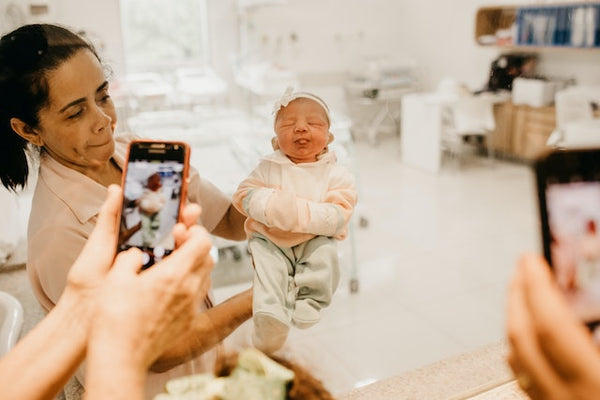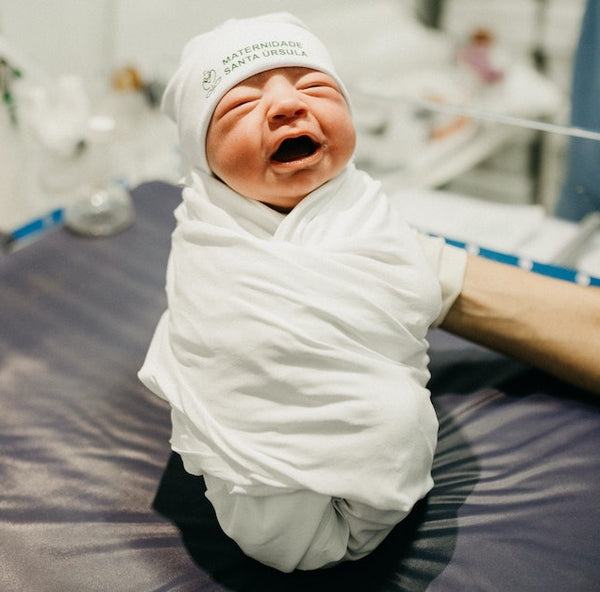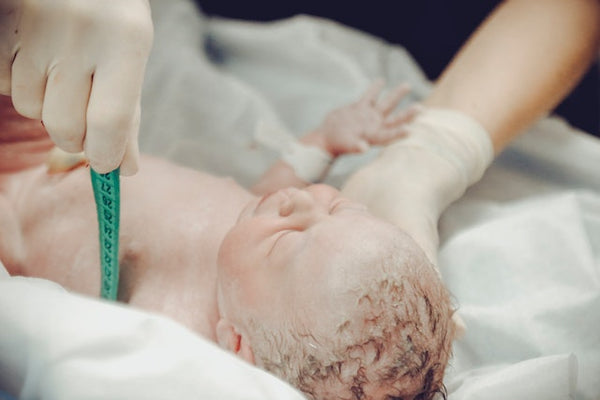What Will My Newborn Look Like? What Parents Need to Know

Updated 29 Dec 2024
Love is blind, and parents almost universally think their own new babies are adorable. But let’s face it – most newborns aren’t exactly “cute” right after delivery. That's understandable given their tumultuous journey into the world! But is it normal for their heads to be oddly pointed and their genital area to be swollen? If you’re wondering “What will my newborn baby look like?” you’re not alone. Let's take a look at the reasons behind the peculiar appearance of newborns from head to toe.
What Will My Baby’s Head Look Like?
Your baby's head might look a bit odd or pointy. This happens because of the way babies move through the birth canal during delivery, or if a vacuum device is used. The good news is that their head usually goes back to its normal shape within a couple of weeks. Babies born through C-sections usually have round heads because they didn't go through the birth canal. Their faces also don't swell as much as babies born vaginally.
There are soft spots on your baby's head called fontanels. These are diamond-shaped spaces in the skull covered by skin. They helped your baby's skull adjust during birth and allow their brain to grow quickly. The smaller spot at the back typically closes by the time your baby is 2 to 3 months old. The larger spot near the front usually closes around 18 months of age. These spots are usually a bit lower than the surrounding area and you might see a gentle pulse. They're covered by a thick layer of fibrous tissue and are safe to touch gently.
Sometimes, newborns get a condition called cradle cap, where their scalp gets red and flaky. It usually goes away on its own after a few weeks or months and typically doesn't bother them. If you see this on your baby, washing their hair a bit more often with gentle baby shampoo and using a soft brush can help.
What Will My Baby’s Hair Look Like?
Get ready for some surprises when it comes to your baby's hair. African-American babies might have straight hair, even if their parents have curly hair. Caucasian parents with dark hair could have a baby with red or blond hair. And fair-haired parents could be surprised with a dark-haired baby. Sometimes, parents are left wondering what color their baby's soft hair is exactly.
But don't let newborn hair fool you – it often doesn't predict how their hair will be later. Even if your baby is born with lots of hair, they might lose it in the first weeks or months, especially if they spend a lot of time on their back. When their hair grows back, it might even be a different color. Hair texture can change a lot in the first six months, too. For example, your baby's soft curls might turn into tighter, coarser ringlets.

What Will My Baby’s Body Look Like?
After spending nine months in the tight space of your womb, your baby's body might look curled up and need time to stretch out. Within a week or two, your baby's arms and legs will start to uncurl. When she does stretch out, she might appear a little bowlegged until she begins walking.
Some babies find comfort in swaddling, where they're wrapped snugly in a blanket. This reminds them of the cozy space in the womb. In the first week, your baby might lose a bit of weight but don't worry. By the second week, they should start gaining it back, and they'll continue to gain ounces and pounds quickly in the following months, filling out their little belly.
Around one to three weeks after birth, your baby's umbilical cord stump will fall off, leaving a cute belly button. Sometimes it might leave a raw spot that can ooze a little fluid with a bit of blood. To help it heal, gently clean it with a cotton swab dipped in rubbing alcohol. If the stump doesn't fall off within a month, talk to your baby's doctor.
Both boys and girls may have swollen genitals and breasts when they're newborns. This happens because of the hormones they got just before birth. A milky substance might even leak from your baby's nipples. Don't try to squeeze it out – it's harmless and will dry up on its own. Girls might also have some white discharge or a bit of blood-tinged mucus. All of these things will go away in the first few weeks.
What Color Will My Baby’s Eyes Be?
Many African American, Asian, and Hispanic babies are born with dark gray-brown eyes that usually stay that way. But some might begin with hazel eyes that get darker by around 6 months. For many Caucasian babies, their eyes are initially dark gray-blue, and it can take a while, even years, for their permanent color to show up. Usually, the eye color you see at six months is what they'll have.
Sometimes, newborns have red spots in the whites of their eyes, which can look worrying. This is called a subconjunctival hemorrhage, but it's harmless and goes away in a few days. This happens because of the stress during birth.

How Do You Know What Skin Color Your Baby Will Have?
Newborns of all races have reddish-purple skin that turns pinkish-red in about a day due to visible blood vessels under their still-thin skin. Their hands and feet might look bluish temporarily as their blood circulation matures. Initially, a baby's skin may be slightly lighter than their eventual color, but it darkens within two to three weeks. Their skin color can continue to change over time and should settle fully by the time they are 20 months old.
Premature babies have almost transparent skin covered with fine hair (lanugo) and a protective substance (vernix). The later the baby's delivery, the less lanugo and vernix they'll have.
Some newborns have skin conditions such as:
- Jaundice: Yellowish skin due to breaking down extra red blood cells. Usually not a worry and goes away in a week or so.
- Milia: Small white or yellow dots on the face, disappearing in a few weeks.
- Pustular melanosis: Small, pus-filled bumps leaving dark marks. Common in African American babies, no treatment needed.
- Erythema toxicum: Hive-like rash with red blotches and pale or yellowish bumps. Harmless and disappears within a week.
- Newborn acne: Caused by maternal hormones, often on forehead and cheeks. Usually resolves on its own.
- Birthmarks: "Mongolian Spots" (a.k.a. congenital dermal melanocytosis), "salmon patches," “angel kisses,” and “stork bites” are common. They vary in appearance and can show up anywhere on the body. Most are harmless and may go away on their own, except for some like "port-wine stains."
The Takeaway on How to Tell What a Newborn Will Look Like
As you hold your newborn for the first time, a whirlwind of emotions will flood over you. Their appearance is a tapestry woven from the threads of genetics, heritage, and individual uniqueness. Each baby is a tiny masterpiece, and while you may find joy in trying to predict their future features, the true magic lies in the discovery of who they are becoming. Your newborn's appearance is just the beginning of a remarkable journey filled with growth, development, and endless surprises. Embrace every moment, and watch in awe as your baby's story unfolds.










